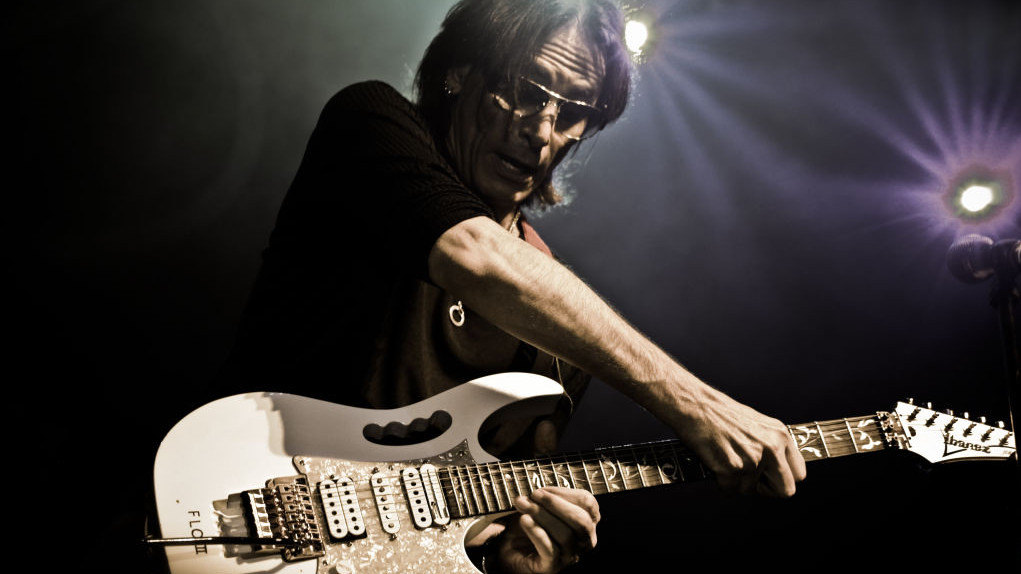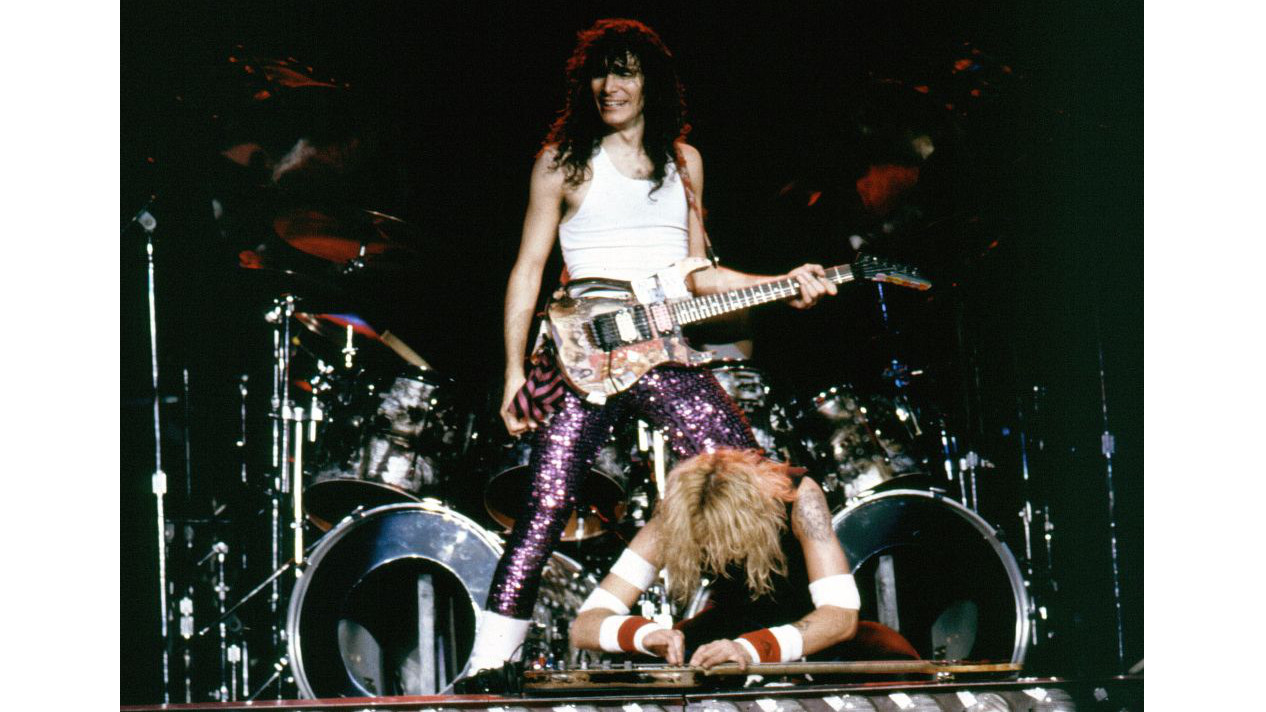One for the road - Steve Vai: “The moment I got onto the stage and started playing, I discovered this is my natural state of being”
On early shows, tonal wisdom and going big with Smalls

Steve Vai recalls teenage pre-gig nerves and details a rig so big it has its own zip code...
What was your first gig and how did it go?
“I was 13 and playing in a band called Circus. I remember that I enjoyed playing guitar in the privacy of my own little bedroom and I loved creating fantasies about being a future rock star, so I was a rumour in my own room and a legend in my mind. When the reality that we actually had a gig set in I started to become petrified. I found myself so completely anxiety ridden that it got to the point where, two or three days before the show, I couldn’t sleep.
“I remember the day of the gig: I’m doing a soundcheck and I was so nervous. I was practising The Star-Spangled Banner and the strap broke on my guitar - it started to fall and I went down with the guitar as well. My knee hit the wah-wah and turned it on in the treble position. As I went down, the speaker was parallel with my ear and the guitar fed back this piercing pitch that went right into my ear and I virtually fainted. It twisted my eyeballs. I remember coming to and trying to say the words, ‘Help me, help me...’ and everything became surreal and weird. I finally walked off stage and threw up.
“Then the lights went down and the oddest thing happened: when I walked on stage to do the gig, put the guitar on and started playing, there was this feeling that came over me and the best way to describe it is ‘home’. I felt completely relaxed, confident and on a high. Before that I felt I loved playing the guitar but I’m never going to play live again, but the moment I got onto the stage and started playing, I discovered this is my natural state of being.”
Describe your current stage rig...
You want to start with what sounds good to you in your bedroom or rehearsal hall or whatever it is
“I’m really happy to have discovered this company called Synergy. They make these modules that are analogue and they are the preamp sections of contemporary amplifiers - they’re built around the actual preamp section of things like a Fender Deluxe or Bassman, Friedman, Marshall. With one rack space you can have two modules - and they have tubes in them and everything - and so I have three rack spaces, six modules with two channels of each, so I have 12 channels of diverse-sounding amplifiers at my foot. It has a loop, too, and so I can put my Legacy in that. It’s like opening the floodgates. I love the Legacy, but I was never completely satisfied with the clean tone because I love Fenders. Now I hit a button and I’ve got a Bassman - and it is a Bassman, y’know? So that’s the main brains of my rig.
Want all the hottest music and gear news, reviews, deals, features and more, direct to your inbox? Sign up here.
“From my guitar - and I always use [Ibanez] Jems - I go into a Cry Baby. Depending on where I am I may use a Bad Horsie, and then out of that I go into a Jemini distortion pedal, which I built with Ibanez many years ago, and that goes into a DigiTech Whammy pedal, and all of these are hard-bypassed by looping systems. Out of that it goes to the front of the amp and out of the back of the amp I come out of the send and I go into the Fractal Axe-FX III and that is a space station, man. I cannot find, or have not heard, anything on the market that’s as powerful and as transparent as that device; it’s a marvel. I come out of that stereo and - in the studio - that goes into a host of outboard gear, because I’m experimenting with things like the new Eventide H9000. But, live, I don’t do that because the Fractal does everything. So out of that I have a stereo feed that goes into a stereo Synergy power amp that feeds my stereo speakers.”

What’s your best tip for getting a good live sound?
“You want to start with what sounds good to you in your bedroom or rehearsal hall or whatever it is. What sounds good coming from your speakers needs to be your first priority. Keep in mind that it changes drastically when you get on stage because the way you’re hearing yourself, from a stage perspective, there are a lot of variables. Things like the size of the room, what the room is covered in, what the floor is made out of, how many seats there are, how far away the back wall is and what that back wall is made with. You would be shocked to enter a beautiful theatre, be on stage and hit a note and hear that note slapping back at you. Then a rubber stage sounds different to a wooden stage, which is very different to a tile or cement stage... All of these things have an impact on the way the frequencies hit each other.
“One of your biggest variables is the monitor system: how are you hearing your guitar? Is it coming through the monitors in front of you or are you listening to what’s at the back of you? What I do to circumnavigate the incredible diversity of monitors is - and I recommend this for any guitar player - I actually have a stereo 2x12 guitar cabinet right in front of me and that’s fed directly from my rig. I don’t hear what’s in back of me because if I’m too loud it ruins the mix, so I have to adjust my stage volume to what the sound man feels is the best blend for the whole stage. It doesn’t matter how loud I have my monitor in front of me because I’m the one that’s hearing it and it’s a direct replica of my guitar tone.
“The thing to remember when you’re playing live and have worked hard to get the best sound you could and then you’re subjected to whatever the moving parts are, is not to complain in your head about it. You embrace the sound as if you planned it and that’s the secret. The only thing that screws you up when you’re playing live is your perspective on it and if you’re complaining about it in your head, you’re not focusing on your playing.”
What’s the best venue you’ve played in and why?
“I was on tour once and I was performing in Dallas, Texas at this crappy little club and there was no stage, really. They had to set me up on a riser and I remember standing up there and, for some reason, all of the elements came together. I couldn’t move around the stage because I was pretty confined, but it just sounded fat and warm.
Dave Roth liked my guitar to be very, very, very loud... when I hit a note on that stage and you were unprepared, you may never have children again
“When I was on tour with Dave Roth I had a pretty good guitar tone and it was pretty consistent every night once I started using Soldanos, because Dave liked my guitar to be very, very, very loud in every corner of the stage. I probably had 25 cabinets buried under the stage, at the sides, in the pits, at the back of us... when I hit a note on that stage and you were unprepared, you may never have children again.”
What’s the worst journey you’ve had to or from a gig?
“I usually don’t do one-offs that are far away because they’re too time-consuming. I had been approached many times to do these festivals in India and I could never really do them because the numbers just didn’t work. Finally, they made it work and it took three days of solid travelling to get to this gig. I love travelling, I don’t have a problem with it, but enough is enough, you know?”
Have you had any Spinal Tap moments on tour?
“So many. One of the ones I still giggle at is last year I put on the Big Mama Jama Jamathon and the idea was a 53-and-a-half- hour jam where the music didn’t stop. I called everyone I knew and everybody that was in town came down and jammed. I did it as a fundraiser for Extraordinary Families and we raised over $100,000 and it was viewed by over two million people. But where we did the performance was at the Musicians’ Institute so there weren’t a lot of people who actually came to the event because it was ongoing. So at times there was nobody in the audience. One of the artists who contributed was Derek Smalls - the bass player from Spinal Tap - and he did an amazing set for 45 minutes and I played a song with him. The funny thing was, when Derek was performing, there were only six people in the audience. That was the most Spinal Tap moment I’ve experienced.”
What’s your favourite live album?
“I would say it has to be the new Generation Axe [The Guitars That Destroyed The World]... There’s nothing like it on the planet.”
Steve appears on Guitars That Destroyed The World by Generation Axe on the Absolute label, out now

